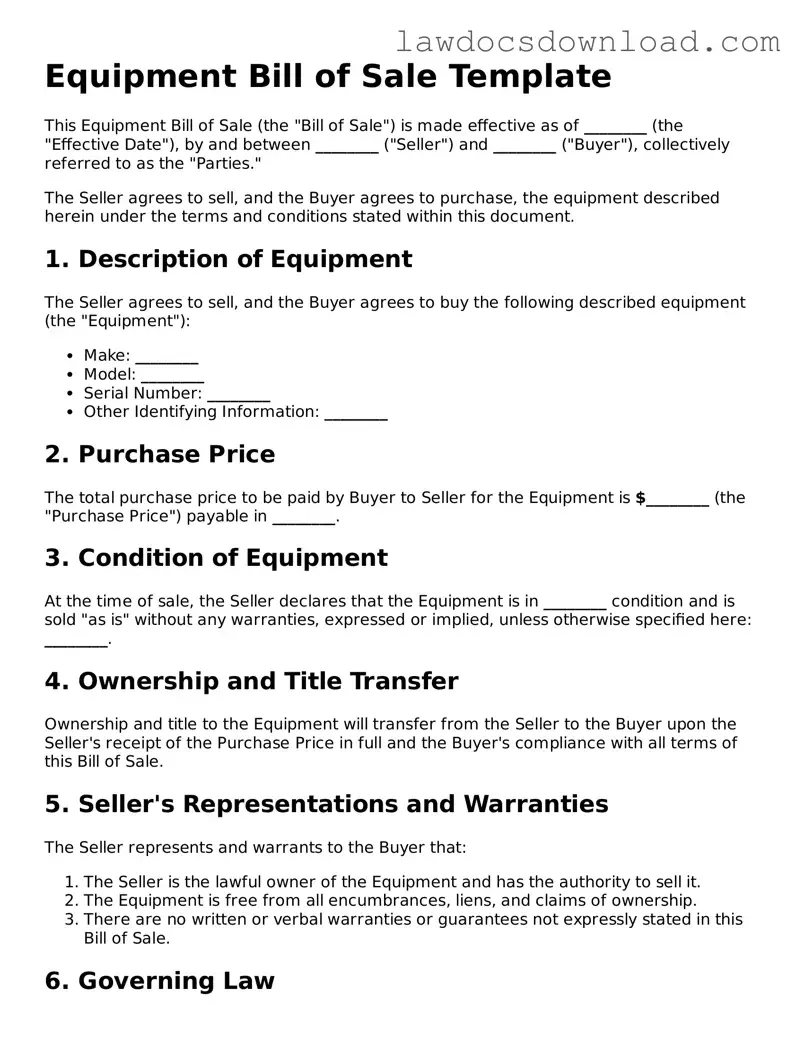Equipment Bill of Sale Template
This Equipment Bill of Sale (the "Bill of Sale") is made effective as of ________ (the "Effective Date"), by and between ________ ("Seller") and ________ ("Buyer"), collectively referred to as the "Parties."
The Seller agrees to sell, and the Buyer agrees to purchase, the equipment described herein under the terms and conditions stated within this document.
1. Description of Equipment
The Seller agrees to sell, and the Buyer agrees to buy the following described equipment (the "Equipment"):
- Make: ________
- Model: ________
- Serial Number: ________
- Other Identifying Information: ________
2. Purchase Price
The total purchase price to be paid by Buyer to Seller for the Equipment is $________ (the "Purchase Price") payable in ________.
3. Condition of Equipment
At the time of sale, the Seller declares that the Equipment is in ________ condition and is sold "as is" without any warranties, expressed or implied, unless otherwise specified here: ________.
4. Ownership and Title Transfer
Ownership and title to the Equipment will transfer from the Seller to the Buyer upon the Seller's receipt of the Purchase Price in full and the Buyer's compliance with all terms of this Bill of Sale.
5. Seller's Representations and Warranties
The Seller represents and warrants to the Buyer that:
- The Seller is the lawful owner of the Equipment and has the authority to sell it.
- The Equipment is free from all encumbrances, liens, and claims of ownership.
- There are no written or verbal warranties or guarantees not expressly stated in this Bill of Sale.
6. Governing Law
This Bill of Sale shall be governed by and construed in accordance with the laws of the State of ________. Any disputes under this Bill of Sale shall be resolved in the jurisdiction in which the sale occurred.
7. Acknowledgment
The Parties acknowledge and agree that:
- They have read this Bill of Sale in its entirety.
- They full understand its terms and conditions, which are to be binding upon them.
- This Bill of Sale constitutes the entire agreement between them and supersedes any prior or contemporaneous negotiation, understanding, or agreement, whether oral or written.
- All modifications to this agreement must be made in writing and signed by both Parties.
Signatures
Signed on this ________ day of ________, 20XX.
Seller's Signature: _______________________________
Printed Name: ________
Buyer's Signature: _______________________________
Printed Name: ________
